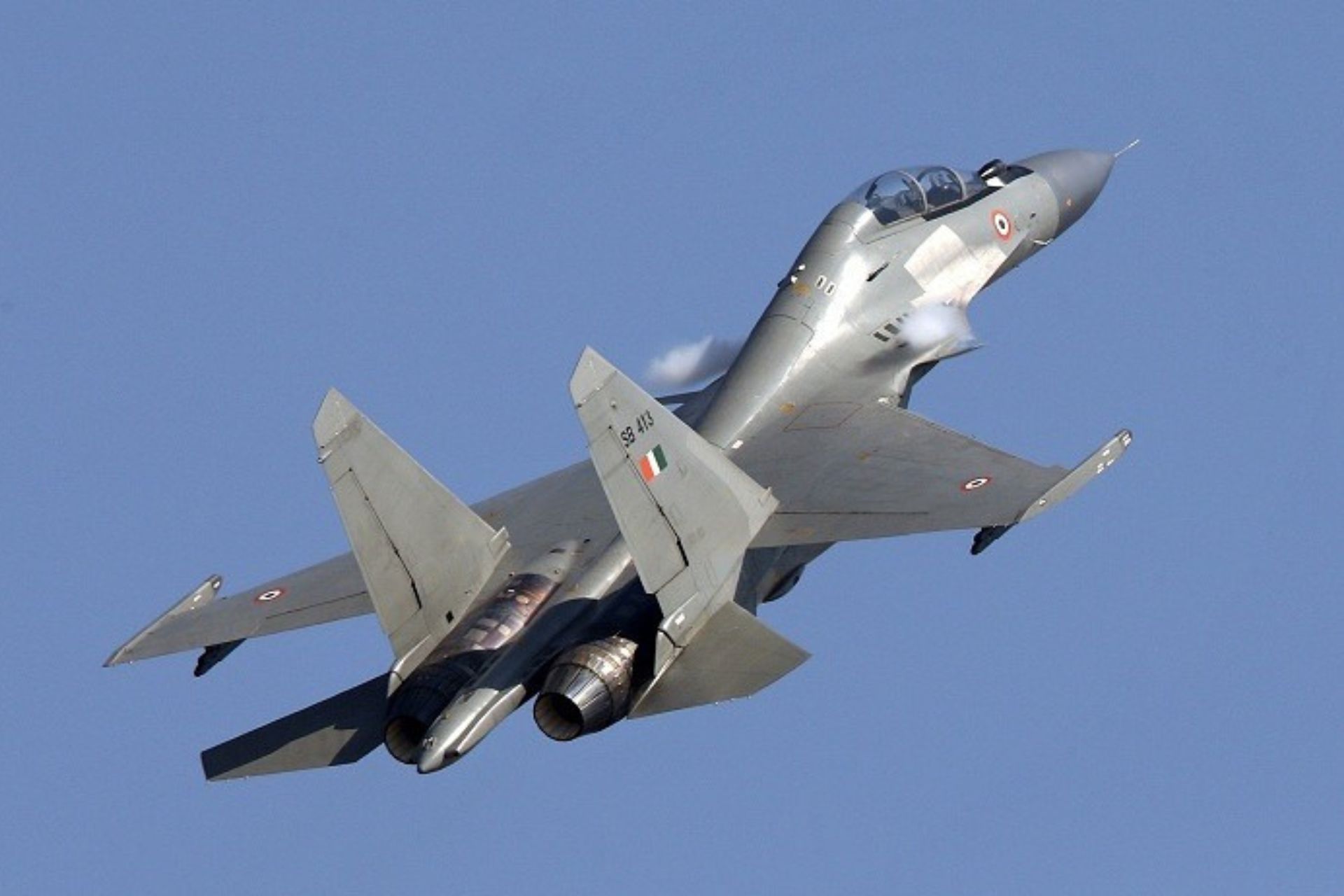Breaking News
India and Russia Discuss Co-Producing Su-30 Fighters For Global Export Markets.
According to The Diplomat, India is nearing a pivotal moment in the global defense market as it enters discussions with Russia about co-producing Su-30 fighter jets for export. This collaboration could significantly alter the export profiles of both nations. India's motivation lies in strengthening its domestic defense industry, while Russia seeks to circumvent Western economic sanctions, particularly those imposed by the U.S. under CAATSA legislation.
Follow Army Recognition on Google News at this link

The Su-30MKI is a multirole fighter developed jointly by Sukhoi Design Bureau and HAL for the Indian Air Forces (Picture source: Marina Lystseva/TASS)
Hindustan Aeronautics Limited (HAL), India's state-owned aerospace company, has been assembling Su-30MKI fighters for the Indian Air Force (IAF) for over two decades. With Indian government support, these talks aim to produce exportable variants of the Su-30 in India. The Su-30MKI, a cornerstone of the IAF since 1998, features advanced technologies such as thrust vectoring engines and electronically scanned array radar.
The Su-30MKI is a multirole fighter developed jointly by Sukhoi Design Bureau and HAL for the IAF. It is equipped with thrust vector control and canards, enhancing its maneuverability. The aircraft first flew in November 2000 and entered service in September 2002. The IAF has ordered 272 of these aircraft, making them the backbone of its fighter fleet.
The Su-30MKI has 12 hardpoints, capable of carrying up to 8 tons of armaments, including air-to-surface missiles (Kh-29, Kh-31, Kh-59M) and air-to-air missiles (R-27, R-73, R-77). It can also launch BrahMos cruise missiles, which have a range of 290 km. For defense, the aircraft is equipped with electronic countermeasures, including the DRDO-developed Tarang radar warning receiver, chaff/flare dispensers, and active jammers. Powered by two AL-31FP engines with afterburners, the Su-30MKI can reach a maximum speed of Mach 1.9 and has a maximum range of 3,000 km, extendable to 8,000 km with in-flight refueling.
The joint production of Su-30 fighters in India offers advantages for both countries. For Russia, it provides a way to bypass CAATSA restrictions that have hindered its ability to sell military equipment to a broader range of countries. By producing Su-30s in India, Russian-designed fighters can access new markets that might otherwise be off-limits due to sanctions. India benefits from maintaining and expanding its domestic defense production, supporting hundreds of local firms involved in the Su-30 program.
Despite the appeal of exporting Indian-built Su-30s, challenges remain. Indian-produced fighters are currently more expensive and require more maintenance than their Russian counterparts. However, offering enhanced variants with improved engines, sensors, and weaponry could make these aircraft competitive on the global stage. India's efforts to indigenize production could also reduce costs and improve quality over time.
The strategic implications of this collaboration extend beyond economics. By jointly producing Su-30 fighters for export, India and Russia could strengthen their defense ties and expand their influence in global arms markets. However, Western countries' reactions to these developments remain uncertain, especially the United States, with whom India recently signed new defense agreements.
This example once again highlights India's multi-alignment policy. This strategy allows India to maintain balanced relations with various global powers while preserving its strategic autonomy. India cooperates with opposing blocs, such as the U.S., Russia, and China, without strictly aligning with any of them. India actively participates in organizations like BRICS and the Quad, seeking to maximize its national interests in an increasingly polarized global context. This policy offers India valuable geopolitical flexibility in pursuing its economic and security objectives.


























